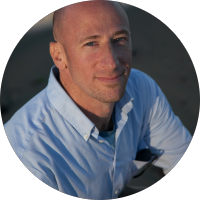Biography
Dr. Andrew Stein was born and raised in New England. His interest in nature and specifically animals led him to capturing snakes, frogs and other local wildlife. In high school and college he volunteered at several zoos and trained dolphins and beluga whales at the Mystic Aquarium before moving to Africa to study big cats, hyenas and African wild dogs. He returned to the States in 2010 and began teaching in western Massacusetts in community colleges and UMass Amherst before landing at Landmark College in the Fall 2013. When not in the classroom teaching Principles of Biology or Field Ecology, he is hiking, playing basketball or dancing Argentine tango.
Education
Ph.D., Wildlife and Fisheries Conservation, University of Massachusetts Amherst
M.Sc., Wildlife and Fisheries Conservation, University of Massachusetts Amherst
B.A., Zoology, Connecticut College
Publications
McNutt, J.W., Stein, A.B., Boggs-McNutt, L.B. and Jordan, N.R. In Press. Living on the edge: Characteristics of human-wildlife conflict in a traditional livestock community in Botswana. Wildlife Research.
Goncalvez, L., Kawanishi, K., Henschel, P., Kittle, A., Sanei, A., Reebin, A., Miquelle, D., Stein, A.B., Watson, A., Kekule, B., Machado, R.B., and Eizirik, E. In Press. Mapping black panthers: Macroecological modeling of melanism in leopards (Panthera pardus). PLOS-One
Stein, A.B., Athreya, V., Gerngross, P., Balme, G., Henschel, P., Karanth, U., Miquelle, D., Rostro, S.,Kamler, J.F. and Laguardia, A. 2016. Panthera pardus. The IUCN Red List of Threatened Species 2016:e.T15954A50659089. http://dx.doi.org/10.2305/IUCN.UK.2016-1.RLTS.T15954A50659089.en
Jacobson, A.P., Gerngross, P., Lemeris, J.R., Schoonover, R.F., Anco, C., Breitenmoser- Wursten, C., Durant, S.M., Farhadinia, M.S., Henshel, P., Kamler, J.F., Laguardia, A., Rostro-Garcia, S. Stein, A.B., and Dollar, L.2016. Leopard (Panthera pardus) status, distribution, and the research efforts across its range. PeerJ 4:e1974;DOI 10.7717/peerj.1974
Weise, F.J., Lemeris, J., Stratford, K.J., van Vuuren, R.J., Munro, S.J., Crawford, S.M., Marker, L.M., and Stein, A.B. 2015. A home away from home: insights from successful leopard translocations. Biodiversity and Conservation. 24: 1755-1774
Stein, A.B., Bourquin, S.L. and McNutt, J.W. 2015. Avoiding intraguild competition: Leopard feeding ecology and prey caching in Northern Botswana. South African Journal of Wildlife Research. 45(2):247-257.
Stein, A.B., Fuller, T.K. and Marker, L.L. 2013. Brown hyena feeding ecology in northcentral Namibia. South African Journal of Wildlife Management. 43(1): 27-32.
Stein, A.B. and Hayssen, V. 2013. Leopard (Panthera pardus). Mammalian Species. 45(900): 30-48.
Stein, A.B., Fuller, T.K., DeStefano, S. and Marker, L.L. 2011. Leopard density and home range estimates at a park/farmland boundary in north-central Namibia. African Journal of Ecology. 49:383-387.
Stein, A.B., Erckie, B., Fuller, T.K. and Marker, L.L. 2010. Camera-trapping as a method for monitoring rhino populations within the Waterberg Plateau Park, Namibia. Pachyderm. 48: 67-70.
Stein, A.B., Fuller, T.K., Damery, D. T.,Sievert, L. and Marker, L.L. 2010. Farm management practices and financial analysis of farmer tolerance of leopards in the Waterberg region, northcentral Namibia. Animal Conservation. 13(4): 419- 427.
Stein, A.B. Fuller, T.K., and Marker, L.L. 2008. Opportunistic use of camera traps to assess habitat-specific mammal and bird diversity in northcentral Namibia. Biodiversity and Conservation. 17(14): 3579- 3587.
Presentations
https://www.youtube.com/watch?v=jLp4jtOIyOI
Interview on BeProvided Podcast: http://beprovidedconservationradio.libsyn.com/dr-andrew-stein-founder-of-claws-conservancy
Select Presentations:
- Invited Presentation—Safari West, Santa Rosa, CA, "Can a Story Save the African Lion?" 2018.
- Invited Presentation—Sacramento Zoo- Sacramento, CA, "Can a Story Save the African Lion?" 2018.
- Invited Presentation—National Geographic Education, Facebook Live, "Lion Darting," 2018
- Invited Presentation—Explorer Classroom, Explore By the Seat of Your Pants Website, "Predator Conservation: My Personal Safari to Africa," 2017
- Invited Presentation—Cat Conservation Summit, Jackson Hole, WY, "A Global Perspective on Cat Conservation to Coexistence: Lion Conservation in Botswana," 2017.
- Invited Presentation—Harvard University Forest, Petersham, MA, "Can a Story Save the African Lion?" 2017.
- Invited Presentation—National Geographic Society, Washington, DC, "Can a Story Save the African Lion?" 2016.
- Invited Presentation—US Fish and Wildlife Service, Washington, DC, "Revisiting Leopard Status: Challenges in the Study of a Secretive Big Cat," 2015.
- Invited Presentation—Landmark College, Putney, VT, "King of the Beasts: Conservation of the African Lion in the 21st Century," 2014.
- Invited Presentation—Putney Conservation Commission, Putney, VT, "Camera Surveys of Putney Conservation Lands," 2014
- Invited Presentation—Beardsley Zoo, Bridgeport, CT, "Conservation of African Large Carnivores," 2012.
- Invited Presenter/Co-organizer—Species Monitoring and Conservation I: Large Carnivores, Ungulates and Grassland Vegetation Maun, Botswana, presentation and field training topics: Camera-trapping, Radiotelemetry, Analysis in Program CAPTURE and LOCATE III, Human-Wildlife Conflict
Academic Interests
Can people and wildlife coexist? Dr. Andrew Stein has been studying the ecology and conservation of African large carnivores since 2001 to answer this question. His work in South Africa, Kenya, Namibia and Botswana is primarily focused on community-based conservation initiatives that engage villagers and ranchers in the management and conservation of some of the most imperiled species in the world. Dr. Stein's current projects include Lion conservation in the Okavango Delta, Botswana, Wolves in Montana and global Leopard conservation efforts as part of his non-profit organization CLAWS Conservancy. Dr. Stein has also worked on fisheries conservation, grassland birds, moose and bowhead whales.
